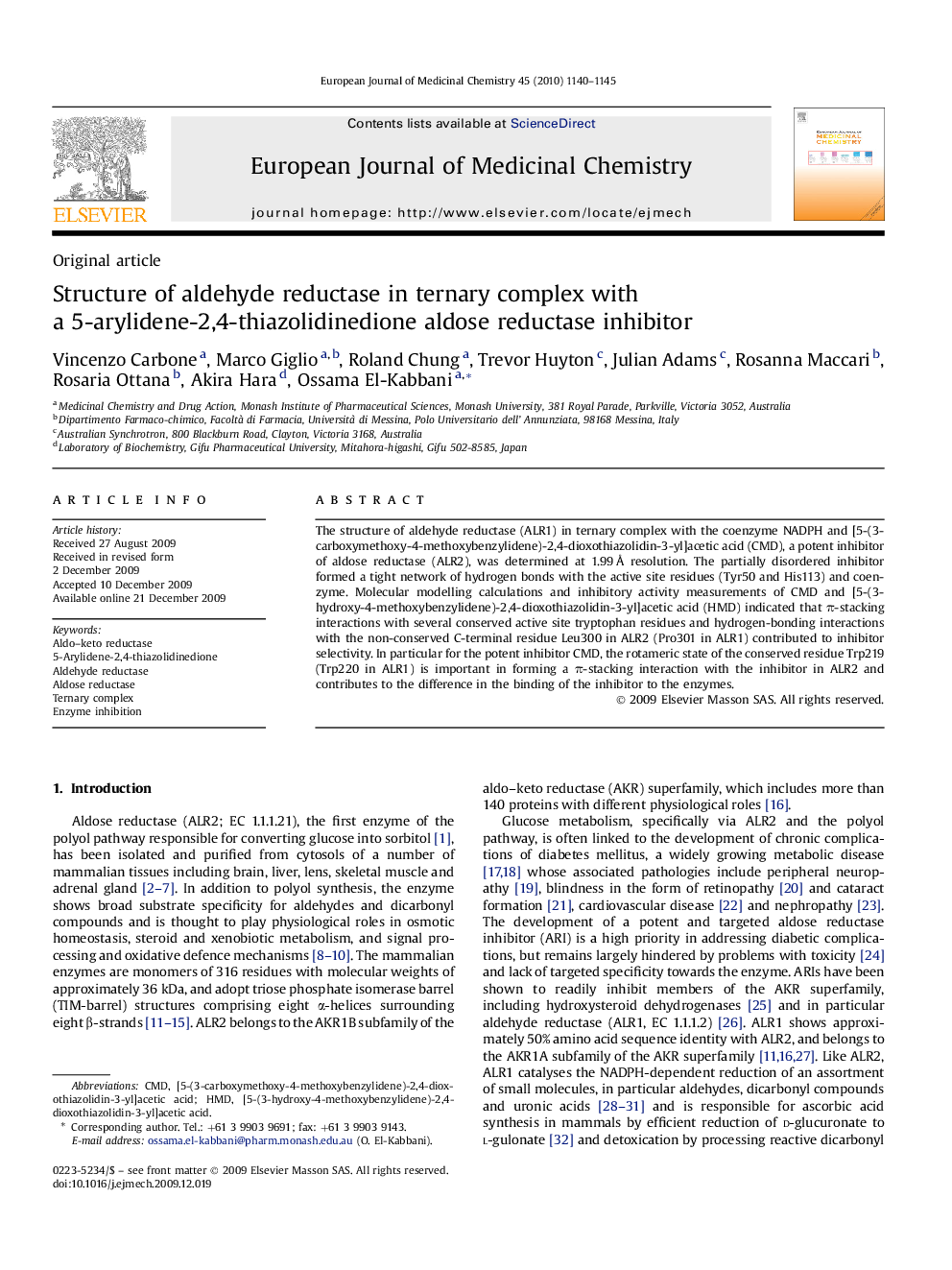| Article ID | Journal | Published Year | Pages | File Type |
|---|---|---|---|---|
| 1397842 | European Journal of Medicinal Chemistry | 2010 | 6 Pages |
The structure of aldehyde reductase (ALR1) in ternary complex with the coenzyme NADPH and [5-(3-carboxymethoxy-4-methoxybenzylidene)-2,4-dioxothiazolidin-3-yl]acetic acid (CMD), a potent inhibitor of aldose reductase (ALR2), was determined at 1.99 Å resolution. The partially disordered inhibitor formed a tight network of hydrogen bonds with the active site residues (Tyr50 and His113) and coenzyme. Molecular modelling calculations and inhibitory activity measurements of CMD and [5-(3-hydroxy-4-methoxybenzylidene)-2,4-dioxothiazolidin-3-yl]acetic acid (HMD) indicated that π-stacking interactions with several conserved active site tryptophan residues and hydrogen-bonding interactions with the non-conserved C-terminal residue Leu300 in ALR2 (Pro301 in ALR1) contributed to inhibitor selectivity. In particular for the potent inhibitor CMD, the rotameric state of the conserved residue Trp219 (Trp220 in ALR1) is important in forming a π-stacking interaction with the inhibitor in ALR2 and contributes to the difference in the binding of the inhibitor to the enzymes.
Graphical abstractA novel inhibitor of aldose reductase-[5-(3-carboxymethoxy-4-methoxybenzylidene)-2,4-dioxothiazolidin-3-yl]acetic acid (CMD) was crystallised in ternary complex with aldehyde reductase. Molecular modelling and inhibitory activity measurements indicated a difference in binding residing predominantly within the non-conserved C-terminal residues of either enzyme .Figure optionsDownload full-size imageDownload as PowerPoint slide
